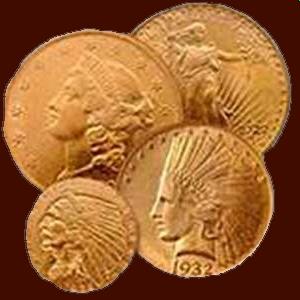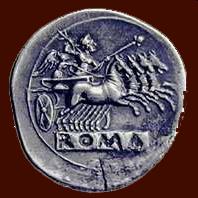




Looking After Your Finds - Identification - Rocks and Minerals
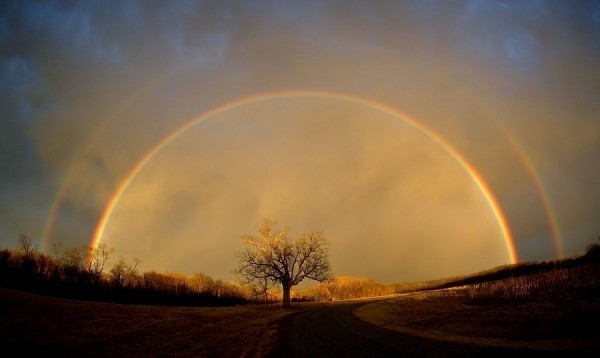
The Rarest Minerals on Earth
Powered By Sispro1

Fibulae1
Copyright All Rights Reserved by Nigel G Wilcox E-Mail: ngwilcox100@gmail.com
Designed by Nigel G Wilcox
Complimentary Topics
The Paragon Of Metal Detecting
& Archaeology
& Archaeology
Pages
Rarest Minerals on Earth
Main Coin Menu
Roman Coins
Menu
Menu
Member NCMD
R&M Index
Rarest minerals on earth: Red Beryl (Bixbite)
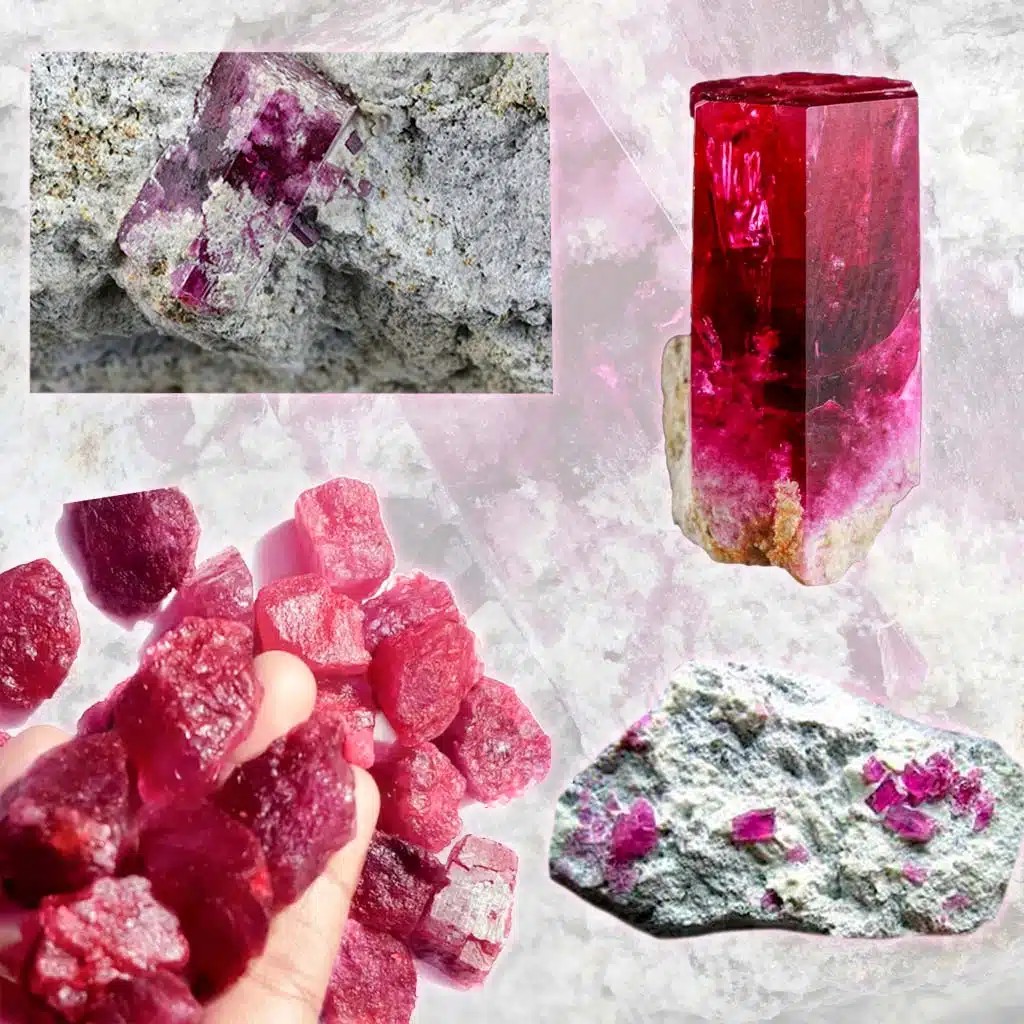
Red beryl, also known as bixbite, is a rare red gemstone that is even rarer than diamonds. Its vibrant red colour is a result of manganese impurities. Found primarily in the United States, red beryl is highly coveted by gem collectors and can command exceptionally high prices.
Red Beryl, also known as “bixbite” or “scarlet emerald,” Red Beryl’s deep red colour exudes a captivating and luxurious allure, making it a highly sought-after gem for collectors and jewellery enthusiasts. Its vibrant and intense red tones set it apart as a symbol of rarity and elegance in the world of precious gemstones.
With its exceptional colour saturation and brilliance, Red Beryl continues to fascinate and enthrall those with an appreciation for unique and exquisite gemstones.
Red Beryl, also known as “bixbite” or “scarlet emerald,” Red Beryl’s deep red colour exudes a captivating and luxurious allure, making it a highly sought-after gem for collectors and jewellery enthusiasts. Its vibrant and intense red tones set it apart as a symbol of rarity and elegance in the world of precious gemstones.
With its exceptional colour saturation and brilliance, Red Beryl continues to fascinate and enthrall those with an appreciation for unique and exquisite gemstones.
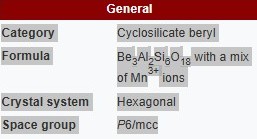

Red beryl, formerly known as bixbite and marketed as red emerald or scarlet emerald, is an extremely rare variety of beryl as well as one of the rarest minerals on Earth: The gem gets its red colour from manganese ions incorporated within the beryl crystal structure. The colour of red beryl is stable up to 1,000 °C (1,830 °F). Red beryl can come in various tints like strawberry, bright ruby, cherry, and orange.
The largest crystals of red beryl are about 2 cm (0.79 in) wide and 5 cm (2.0 in) long. However, most crystals are under 1 cm (0.39 in) long. Recently, the red variety of pezzottaite has been sold in markets as red beryl by some sellers.
The largest crystals of red beryl are about 2 cm (0.79 in) wide and 5 cm (2.0 in) long. However, most crystals are under 1 cm (0.39 in) long. Recently, the red variety of pezzottaite has been sold in markets as red beryl by some sellers.
Red beryl was discovered in 1904 by Maynard Bixby in the Wah Wah mountains in Utah. In 1912 the gem was named bixbite by Alfred Eppler after Maynard Bixby. The old synonym "bixbite" is deprecated, since it can cause confusion with the mineral bixbyite.
The greatest concentration of gem-grade red beryl comes from the Ruby-Violet Claim in the Wah Wah Mountains of mid-western Utah, discovered in 1958 by Lamar Hodges, of Fillmore, Utah, while he was prospecting for uranium. This claim was bought by Denise Knoeller as part of Red Emerald Inc. in 2020.
The greatest concentration of gem-grade red beryl comes from the Ruby-Violet Claim in the Wah Wah Mountains of mid-western Utah, discovered in 1958 by Lamar Hodges, of Fillmore, Utah, while he was prospecting for uranium. This claim was bought by Denise Knoeller as part of Red Emerald Inc. in 2020.
While gem beryls are ordinarily found in pegmatites and certain metamorphic rock, red beryl forms in topaz-bearing rhyolites. It is formed by crystallizing under low pressure and high temperature from a pneumatolytic phase along fractures or within near-surface miarolitic cavities of the rhyolite. Associated minerals include bixbyite, quartz, orthoclase, topaz, spessartine, pseudobrookite and hematite. Synthetic red beryl is produced using hydrothermal process similar to that used for emeralds, however cobalt and manganese are used as dopants to produce a dark red gem.
The dark red color of red beryl is attributed to Mn3+ ions. Red beryl rough crystals can be easily distinguished by hexagonal crystal systems. This gem has been known to be confused with pezzottaite, a caesium analog of beryl, that has been found in Madagascar and more recently Afghanistan; cut gems of the two varieties can be distinguished from their difference in refractive index. Red beryl is similar to emerald and dissimilar to other beryls in that it has inclusions like feathers and fractures. Some mineral inclusions include quartz, feldspar, hematite, and bixbyite.
Chemistry
Arrangement of coordination complexes forming the hexagonal structure of the beryl crystal.
The hexagonal crystal system found in beryls are formed of AlO6 octahedra, as well as BeO4 and SiO4 tetrahedra. The hexagonal channels of red beryl are primarily unoccupied and no detectable water has been found within Red beryl gets its colour from natural chemical doping, whereby Mn3+O6 replaces AlO6 at certain positions. The deep colour Mn3+O6 may be in part explained by the Jahn-Teller effect on spin disallowed transitions.
Red beryl is very rare and has been reported only from a handful of locations: Wah Wah Mountains, Paramount Canyon, Round Mountain and Juab County, all in the south-western United States. The narrow geographic range suggests that the specific conditions needed for its formation do not occur frequently. This gem is a thousand times rarer than gold.
The Utah Geological Survey estimated that one red beryl is found for every 150,000 diamonds. According to Gemmological Association of Great Britain a 2 carat red beryl is as rare as a 40 carat diamond.
Red beryl is valued roughly the same price or higher than emerald despite being a hundred times rarer. Its rarity has made it less popular but red beryl crystals that are over 1 carat can sell for US$20,000.: 123 In 2008, one carat could sell for US$5000 or more.
Limited geographical occurrence means that the Red Emerald Inc controlled world production of natural red beryl as of 2021.
Chemistry
Arrangement of coordination complexes forming the hexagonal structure of the beryl crystal.
The hexagonal crystal system found in beryls are formed of AlO6 octahedra, as well as BeO4 and SiO4 tetrahedra. The hexagonal channels of red beryl are primarily unoccupied and no detectable water has been found within Red beryl gets its colour from natural chemical doping, whereby Mn3+O6 replaces AlO6 at certain positions. The deep colour Mn3+O6 may be in part explained by the Jahn-Teller effect on spin disallowed transitions.
Red beryl is very rare and has been reported only from a handful of locations: Wah Wah Mountains, Paramount Canyon, Round Mountain and Juab County, all in the south-western United States. The narrow geographic range suggests that the specific conditions needed for its formation do not occur frequently. This gem is a thousand times rarer than gold.
The Utah Geological Survey estimated that one red beryl is found for every 150,000 diamonds. According to Gemmological Association of Great Britain a 2 carat red beryl is as rare as a 40 carat diamond.
Red beryl is valued roughly the same price or higher than emerald despite being a hundred times rarer. Its rarity has made it less popular but red beryl crystals that are over 1 carat can sell for US$20,000.: 123 In 2008, one carat could sell for US$5000 or more.
Limited geographical occurrence means that the Red Emerald Inc controlled world production of natural red beryl as of 2021.
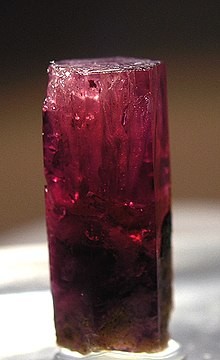
Red Beryl
[4]
[3]
[2]
[1]





















